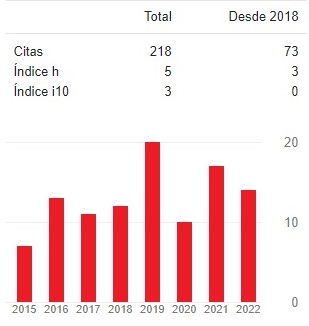The Philosophy of Education of Edith Stein and Augustine
DOI:
https://doi.org/10.51743/cpe.424Palabras clave:
Augustine, Edith Stein, education, philosophy, valuesResumen
This study demonstrates the comparative understanding of Edith Stein and Augustine on truth and love, faith and reason, and individual and community. Augustine tells us that we are pilgrims on this earth who are always in a constant search and discovery. In like manner, Edith Stein acknowledges that truth and love have an intrinsic relationship because truth must be accepted along with love and love with truth. Faith and reason also have an intrinsic relationship. When faith and reason become one, the truth becomes clearer and attainable. Edith Stein demonstrates the relationship and harmony of faith and reason. In the same way, Augustine believes that reason, which is incorporated in the nature of man, and faith, which is illuminated by the Divine, can control the evil that corrupts the soul of man. This article therefore attempts to contrast both ways of thinking and to study the possible similarities between them.
Descargas
Estadísticas globales ℹ️
|
431
Visualizaciones
|
265
Descargas
|
|
696
Total
|
|
Citas
Augustine, & Bettenson, H. (Ed., Trans.). (1972). The City of God. Penguin Books.
Augustine, Hill, E. & Rotelle, J. E. (Eds.) (1997). Sermons, The Works of St. Augustine, vol. XI, New City Press.
Augustine, Hill, E. & Rotelle, J. E. (Eds.) (1991). The Trinity, The Works of St. Augustine, vol. 5, New City Press.
Augustine, & Pilkington, J. G. (1943). The Confessions. Liveright Publishing Corp.
Howie, G. (1969). St. Augustine: On Education. Henry Regnery Company.
Nolan, A. M. (1993) Edith Stein: A Study in Twentieth Century Mysticism. Massey University.
Nota, J. H. (1987). Edith Stein and Martin Heidegger. In: J. Sullivan (Ed.). Carmelite Studies IV (pp. 50-73). ICS Publications.
Parsons, W. S.N.D. (1946) Letters. The Fathers of the Church. New York Fathers of the Church.
Posselt, Teresia Renata de Spiritu Sancto, OCD. (1952) Edith Stein, Sheed and Ward.
Salmond, D.D. (1983). The Catechizing of the Uninstructed. Nicene and Post-Nicene Fathers. CIMA.
Salmond D.D. (1983). Tracts on St. John’s Gospel. Nicene and Post-Nicene Fathers. CIMA.
Salmond D.D. (1983). Expositions of the Psalms. Nicene and Post-Nicene Fathers. Eerdmans.
Stein, Edith. (1992). The Hidden Life, Essays Meditation Spiritual Texts, The Collected Works of Edith Stein, ICS Publications.
Stein, Edith. (2000). Knowledge and Faith. ICS Publications.
Stein, Edith (2000). Philosophy of Psychology and the humanities. The Collected Works of Edith Stein. ICS Publications.
Stumpf, S., & Fieser, J. (2008). Socrates to Sartre and Beyond. A History of Philosophy. Mc Graw Hill.
Teske, R.J., S. J., ed., Ramsey, B. (2004). Letters (Epistolae)156-210, The Works of Saint Augustine. New City Press.
Verhayen, L. (1991). Rule. New City Press.
Descargas
Publicado
Cómo citar
Número
Sección
Licencia
El autor conserva los derechos patrimoniales (copyright) de las obras publicadas, y la revista favorece y permite la reutilización de las mismas, desde el preprint. Las obras se publican en la edición electrónica de la revista bajo una licencia “Creative Commons Atribución/Reconocimiento-NoComercial 4.0 Licencia Pública Internacional — CC BY-NC 4.0”, y se pueden copiar, usar, difundir, transmitir y exponer públicamente .
Los autor/es transfieren parcialmente los derechos de propiedad del presente trabajo para las ediciones impresas y online, siempre que:
- Se cite la autoría y la fuente original de su publicación (revista, editorial y URL de la obra).
- No se usen para fines comerciales.
- Se mencione la existencia y especificaciones de esta licencia de uso.
Se declara además haber respetado los principios éticos de investigación y estar libre de cualquier conflicto de intereses.
«C.P.E.» anima a los autores y a la comunidad científica a la máxima promoción y difusión de los trabajos en su versión definitiva a través de:
1) Su lista de contactos (mails) y redes sociales (Facebook, Twitter, LinkedIn…).
2) Repositorio institucional de su Universidad y repositorios públicos (Mendeley, Cosis…).
3) Redes sociales científicas (ResearchGate, Academia.edu, Kudos...).
4) Web personal o institucional, blog, etc.
5) Google Scholar, ORCID, ResearchID, ScopusID, Dimensions, PlumX...
6) Ejemplares impresos adquiridos directamente y enviados a especialistas para su lectura y posterior citación si procede.




















1.png)
1.png)

1.png)





.png)
.png)

.png)
1.png)
1.png)
